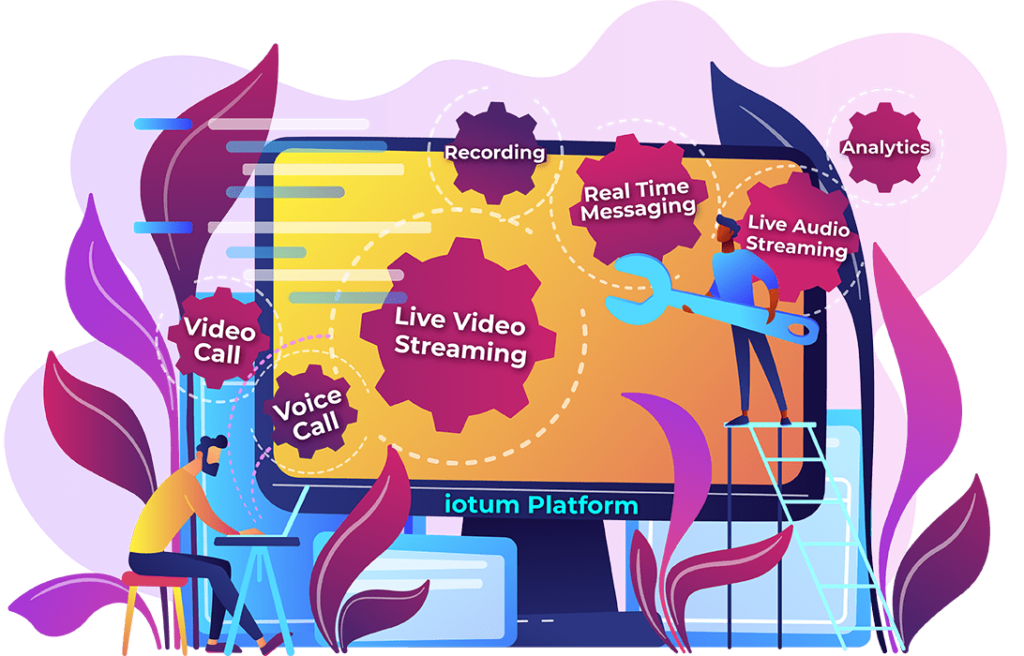 Effective collaboration can take many forms but the one key indicator that leads to results is a shared goal. When everyone knows what they are working for, with a clear vision in mind of what the final product should achieve, everything else can fall into place. The end of the team effort, the destination, will set the groundwork for the journey and how to get there.
Effective collaboration can take many forms but the one key indicator that leads to results is a shared goal. When everyone knows what they are working for, with a clear vision in mind of what the final product should achieve, everything else can fall into place. The end of the team effort, the destination, will set the groundwork for the journey and how to get there.
Sure, that sounds simple enough, however, it’s the “getting there” that requires a few moving parts, like mutual respect, building trust, and great collaboration tools. Thankfully, there are some tried and true methods and boxes to tick that will shape how you and your team get from point a to point b.
Let’s get a closer look at some of the markers of successful collaboration and what it takes to build and maintain a collaborative culture within your team.
What Does Successful Collaboration Look Like?
Collaboration in business starts with cooperation and coordination that works to make an abstract concept into a concrete final goal. By way of sharing thoughts and ideas and carving out an exploratory journey to bring them to life, it’s through these interactions that collaboration supports growth.
For teams to create cohesion, each member must bring with them to the table a set of both interpersonal and technical skills while also having the self-awareness to be continuously recalibrating their contribution and output to support the team.
The building blocks of successful collaboration that gets any project off the ground starts with:
Self Awareness
This refers to a team member’s ability to accurately drill down how they think they see themselves and break down how they think others see themselves. It is the understanding of our own personality, what values we hold close, how our attitudes are shaped, and what behaviors we exhibit. What are your weaknesses, strengths, and capabilities? These all play a key role in your performance at work – especially since we are pretty rocky at judging our own capabilities.
High self-awareness leads to better decision-making, coordination, and conflict management which overall, affects the quality of teamwork.
Active Listening
 This requires giving your full attention to the speaker. Start by observing how they are speaking. What non-verbal behavior is being communicated? Look at their hands, eyes, and position of their body.
This requires giving your full attention to the speaker. Start by observing how they are speaking. What non-verbal behavior is being communicated? Look at their hands, eyes, and position of their body.
Next, pay attention. Where is your focus? Does your mind wander? Stay present and don’t do anything else like check your email, or touch your phone while listening. Follow what they are saying; even if you don’t agree with it, acknowledge their message and respect the delivery of their message by letting them finish their idea, story, etc.
While this may sound straightforward, it’s by not doing this that meetings go overtime, conversations digress, and tangents lead to far off places. Stay on track with active listening skills that lead to good collaboration and problem-solving to give your team the attention it deserves.
Professional Development
When employees feel that their best interests and professional development are taken into consideration, they will go out of their way to improve.
By undergoing further training to ameliorate your technical skills or interpersonal skills like boosting your emotional intelligence, upgrading your software knowledge or improving your public speaking, you are:
- Adding to the collective knowledge of your team
More expertise means you are more well-rounded as a whole and able to take on obstacles that get turned into opportunities. - Amping up employee job satisfaction
It’s more fun when you feel like your colleagues are capable and intelligent and you can learn something from them. - Positioning your company in a good light
By offering training and development opportunities, as an employer, your positive reputation will only increase. Especially if employees are happy and their clients are receiving the benefits of their upgrades, it’s a win-win situation for everyone. - Setting the bar to attract more like-minded go-getter employees
More than just a competitive salary and benefits, when you offer continuing education or opportunities to grow professionally, candidates will take a shining to this “big picture” approach. - Supporting retention
When employees feel supported, they’ll want to stick around and make a difference. Healthy challenges and lifelong learning that push instead of hinder will keep workers on track. Personal development enhances effective team collaboration so people stay instead of wanting to leave in search of greener pastures. - Paving the succession line
Some workers want to stay while others are suited for managerial positions. Those who demonstrate above-average leadership and communication skills might be well-suited as collaborative leaders, for example. Promoting staff becomes more obvious when they’ve spent the time improving.
Good Communication
The flow of work depends on the way in which you’re able to access other group members. With collaboration software that promotes a higher degree of streamlined communication, it’s easy to get your point across via text or video chat, or work on a project with a colleague from a different location on a conference call.
For example, create an easily accessible guide that highlights group norms (or ground rules) and makes it easy for everyone to be a part of. Rules can include:
- Listen to understand instead of reply
- The mind is a parachute – it works better when it’s open
- Remove the inclination to be defensive
- Give colleagues the benefit of the doubt – especially when communicating online
- Practice and work on how you experience humility
Apply these same group norms to how you convene as a group in an online meeting:
- Meetings are to start and end on time
- Meetings with over XX participants will be recorded
- An agenda will be sent out prior to the sync
- Each team member must speak up
- Action points will be summed up in an email
Better solutions for better collaborative groups can be implemented with collaboration tools that work to instill improved communication and development. Using a two-way communication platform for empowered collaboration gives your business unlimited access to both internal and external communication between workers and clients.
Why Is Team Collaboration Necessary?
 Collaboration stimulates insights and connects the dots of creativity. When two seemingly separate concepts are connected to create a fresh idea, it’s this vision and capability to see them as un-separate that leads to breakthroughs.
Collaboration stimulates insights and connects the dots of creativity. When two seemingly separate concepts are connected to create a fresh idea, it’s this vision and capability to see them as un-separate that leads to breakthroughs.
Plus, when people put their heads together, engagement surges, accountability rises, and people want to do their best and keep the team afloat.
(alt tag: Bird’s eye view of woman writing in her notebook at desk in front of desktop computer while video conferencing in a meeting)
Engaged Employees
Collaborative groups that shine have something in common – their members are engaged. They are all in and are willing to do whatever it takes to get the job done. Why? Because their ideas, time, and effort are in the mix alongside their teammates. Working in collaborative teams engages employees by:
- Involving all players
When all employees and collaborative leaders can see the vision, their immediate role needs to be outlined. Knowing their part by clearly delineating metrics and measurable outcomes will help them fulfill what needs to get done and make them feel validated. - Creating structures and systems
Assign different work teams to specific projects and concerns so they can continue to dig deep and improve. An online workspace and or two-way communication platform provides the collaboration and direct communication required between team members and leaders. - Equipping collaborative leaders
Learn how different leaders work and what their strengths and weaknesses are. Enlist their expertise based on their experience and apply that to different groups and roles. What does the “middle” need, and how can middle management get support? - Empowering competency
Go above and beyond when it comes to empowering how employees work; provide more learning and encourage upgrading skills, and new skills and behaviors that can be put into action on the fly. - Sharing what’s going on
Celebrate wins and share it with others throughout the process. Similarly, also keep the lines of communication open when things get challenging and all hands on deck are needed.
When everyone feels like they are part of a team and each person has their own weight to pull, work output becomes more efficient. Higher engagement becomes obvious and collaboration is top notch.
Great Open Communication
Building a collaborative culture within your team gets even more fired up when open communication is at the forefront of how things get accomplished. Foster this approach by:
- Getting employees to share their thoughts and opinions
- Viewing your employees’ input as important and from the “frontline”
- Listening to your team and taking the time to reflect
- Pushing for more social and personal interactions
- Instilling a sense of respect across all levels
- Know your employees
- Design a schedule everyone can see and adhere to it
- Describing what you’ve observed rather than judging
- Facing problems instead of shying away
These are just a few of the many ways you can work towards richer, more open communication. Use these tactics with an online communication platform that sparks a fire to get things done succinctly and with less room for misunderstanding.
FreeConference.com is designed to power up how you communicate within your team and outside of it. Strengthen collaboration with online meetings that bring your team closer and inspire the best work from each individual. Enjoy web conferencing features that come loaded with screen sharing, document sharing, online whiteboard and more for heightened conversations and meetings that lead to successful collaborations.


